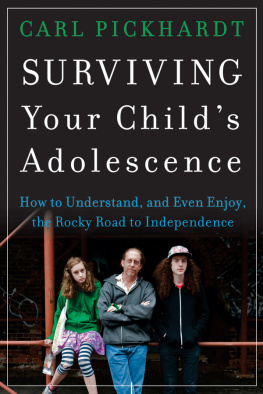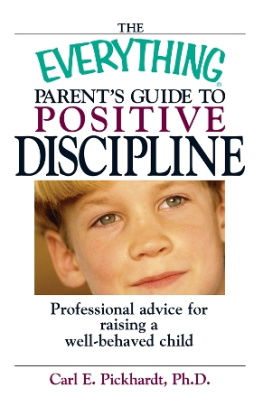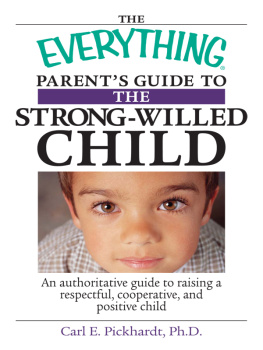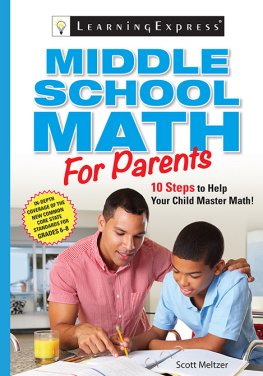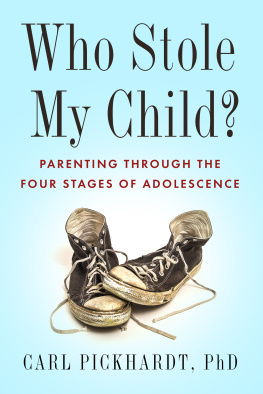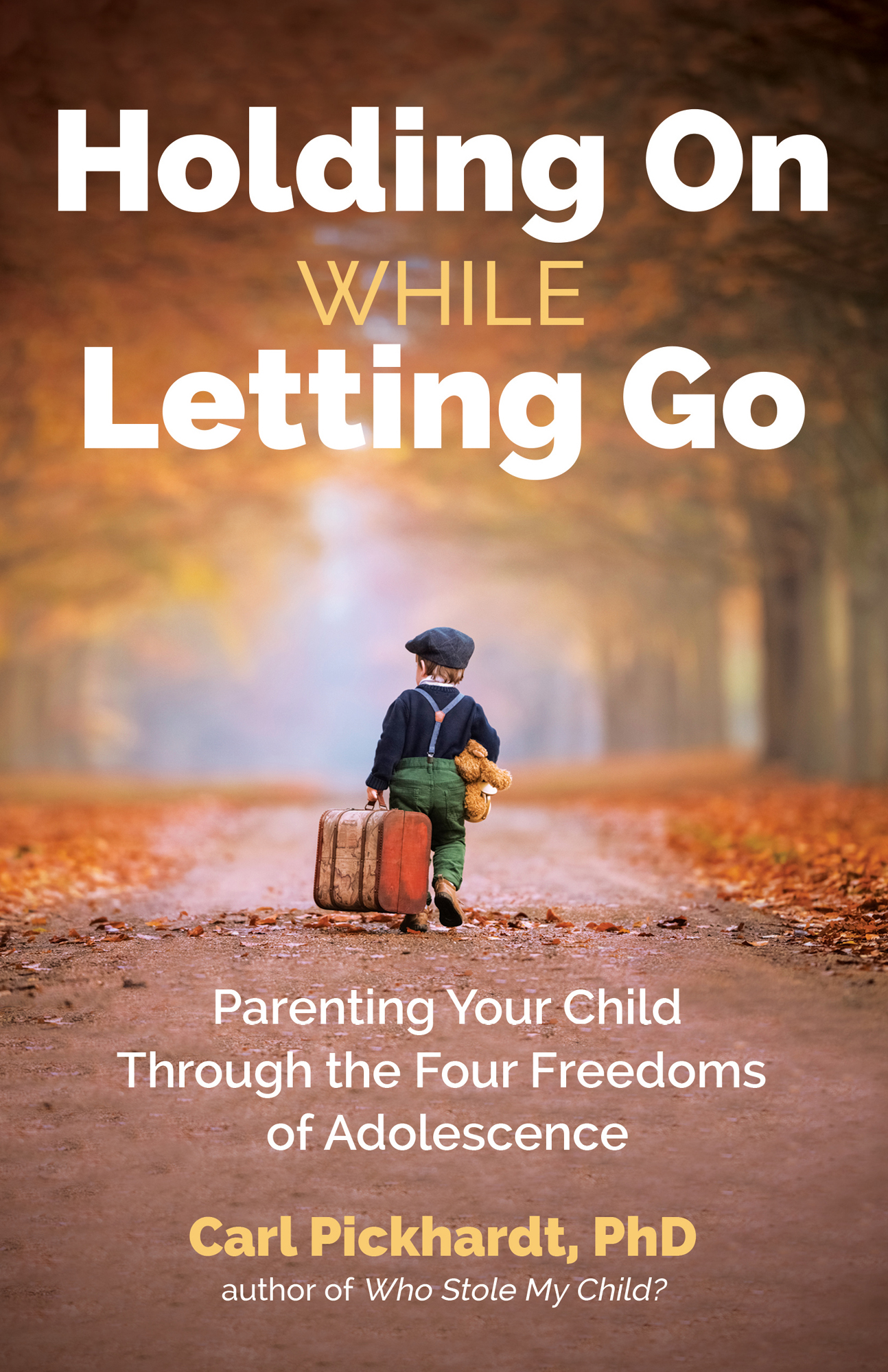Contents
Guide
Holding On While Letting Go
Parenting Your Child Through the Four Freedoms of Adolescence
Carl Pickhardt, PhD
Author of Who Stole My Child?
Praise for Holding On While Letting Go
Holding On While Letting Go is precisely the guidebook parents need to instill confidence, mental health, and independence in our children, while building a connected and caring relationship with them at all ages. Carls Four Freedoms show how to raise our kids into healthy, well-adjusted adults. The book is a resource to help parents adapt, encourage, and grow themselves helpso ultimately we are all at our best.
Elizabeth Hamilton-Guarino, mom of four sons and author of The Change Guidebook
Disclaimer

I am an applied psychologist, not an academic one. I write from observational experience and reflection, not from experimentation or literature review. I created the ideas in this book to capture some of the complexity of the changing parent/teenager relationship as, in retirement from private practice, I reflect back on my experience giving counseling and parenting talks over many years. This said, all of the examples used and quotes given are fictitious, constructed to illustrate psychological points. 
Dedication

O nce upon a time there lived a girl or boy who felt ready for a change. They didnt want to be defined and treated as just a little child anymore. Restless and dissatisfied, more frequently distracted and bored, the young person now wanted something very importantmore freedom to grow. But how?
Looking forward, they dimly saw a pathway open before them that left childhood behind and led to an older future far ahead. And while they were excited by the possibilities, they also felt scared of the unknown. So they must be brave.
Then a troubling change began to happen at home. As they pushed against and pulled away and got around their parents for more running room, these ruling adults, who used to be mostly happy and pleased, now acted more frequently concerned and irritated, less fun and understanding to be around. Why so?
The answer is that the harder half of growing up called adolescence was coming last, making it also the harder half of parenting. The childs ten- to twelve-year coming-of-age passage was beginningthe adventurous and abrasive process of separation that would finally transform the girl or boy into a functionally independent and fittingly individual young woman or young man at journeys end.
In response, parents would struggle to practice the art of holding on while letting go, insisting where they must and allowing where they could, and in the process undergoing transformation too. In fits and starts, they would gradually relinquish leadership control as the young person assumed more self-management authority.
So this book is dedicated to the loyal parents and determined teenagers who strive to stay caringly and communicatively connected as four adolescent drives for freedom gradually grow them apart, which they are meant to do. 
Introduction

Get Ready, Get Set, Go!
When you choose to have a child, you have agreed to have an adolescent.
S urely, if one word is commonly associated with the image of the teenager it is freedom. The very breath of adolescent life, freedom is the power to make ones own decisions, to find ones path, to not be told how to act, to become different, to oppose social restraint, to explore the world outside of family, to test and contest limits, to dare the untried, to follow ones dream, to run with friends, to act more grown up, to determine ones direction. Freedom: you cant grow up without it!
To cope with this irresistible call, I believe its best for parents to be prepared for changes to come. To this end, this book explores how four basic freedoms can sequentially and cumulatively drive the period of growing up commonly termed adolescence. Each freedom is linked to what I see as one of four successive stages of development that begin with separating from childhood at the outset and winding down ten to twelve years later with the departure into self-managed independence at the end.
Of course, these stages are only approximations. Not every parent will experience each freedom issue exactly the same way with every teenager since the adolescent passage is subject to great individual variation.
However, I believe these four unfolding and accumulating freedoms that constitute the major sections of this book generally apply:
- 1. Freedom from rejection of childhood to stop acting as just a child (around the late elementary school years).
- 2. Freedom with association with peers to form a second family of friends (around the middle school years).
- 3. Freedom for advanced experimentation to signify becoming more adult (around the high school years).
- 4. Freedom to claim emancipation to become ones ruling authority (around the college-age years).
The four larger sections of this book describe some specific adolescent and parenting challenges commonly associated with each freedom.
Introductory to these sections are four chapters that prepare the readers way. These chapters address
- adolescence as change;
- holding on while letting go;
- communicating when growing apart;
- the importance of heeding freedoms call.
I have written conversationally, as my goal in this book is to talk with parents about how four sequential freedoms energize teenage development. I believe that the less surprised parents are by common adolescent changes, the more appropriate and effective their responses are likely to be. If they can keep their expectations ahead of the young persons growth curve, when the next step is taken, they can respond with more power of understanding and less risk of overreaction: I didnt want her to try this in high school, but I thought there was a chance she might, so at least Im not completely surprised.
Over many years of writing columns, blogs, and books of adult nonfiction and young adult fiction, I have told and retold the coming-of-age story that continues to endlessly fascinate me. Before retiring from private practice, for over thirty years I was engaged in counseling and giving public talks about the parent/adolescent relationship.
With this much experience, you might think that I would have arrived at a clear picture of what is going on during the childs adolescence, but this is not the case. The more Ive observed and pondered, the more complicated this life transition has become for me to understand. Its been like trying to assemble a puzzle of infinite pieces, never getting the larger picture exactly right.
Thus, the best I can offer parents is an approximation. This book is a tool kit of ideas, an estimate of tendencies, some ways to think about what is happening, why it is happening, and how parents might want to respondit is not a statement of certainties.


